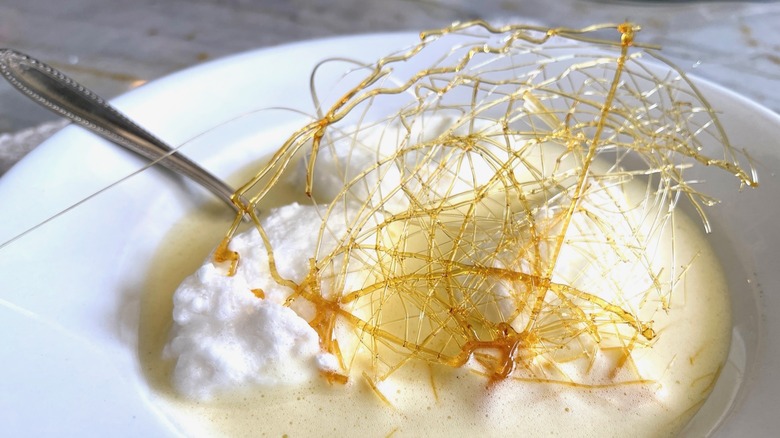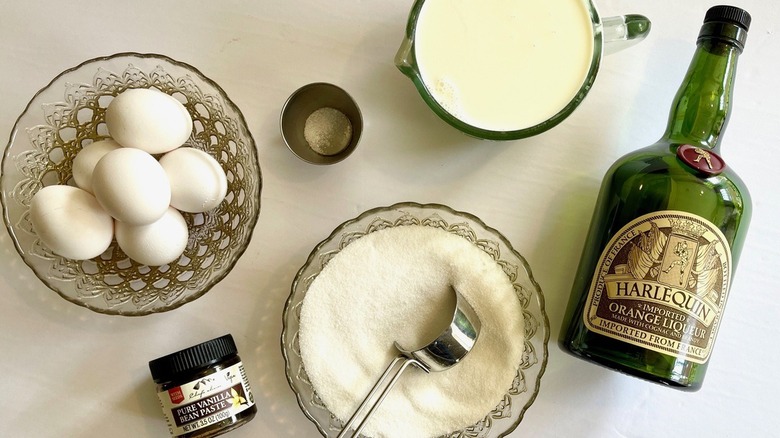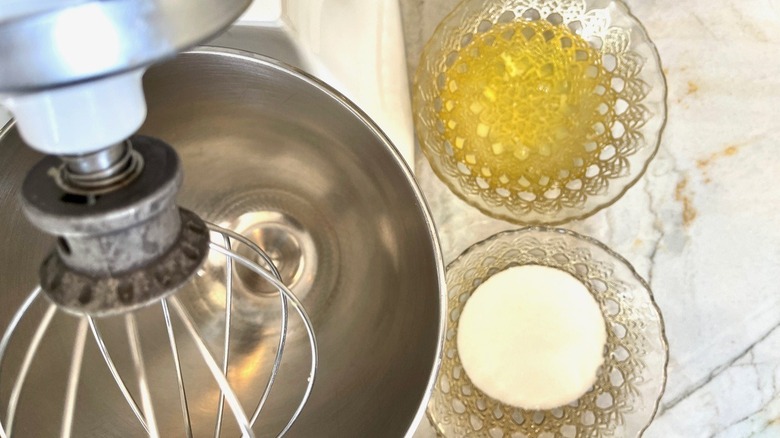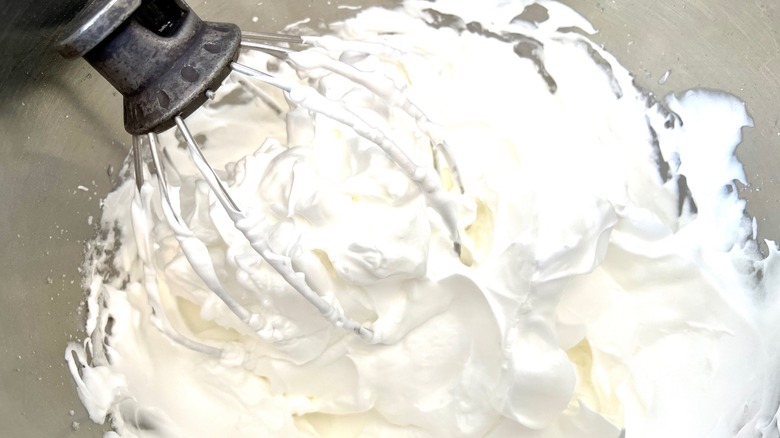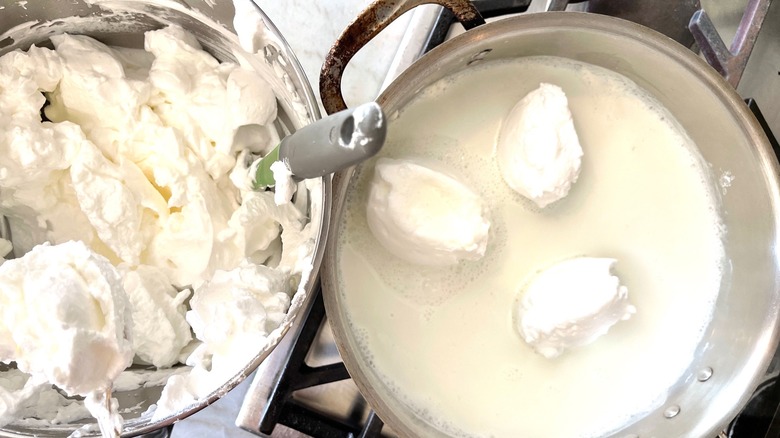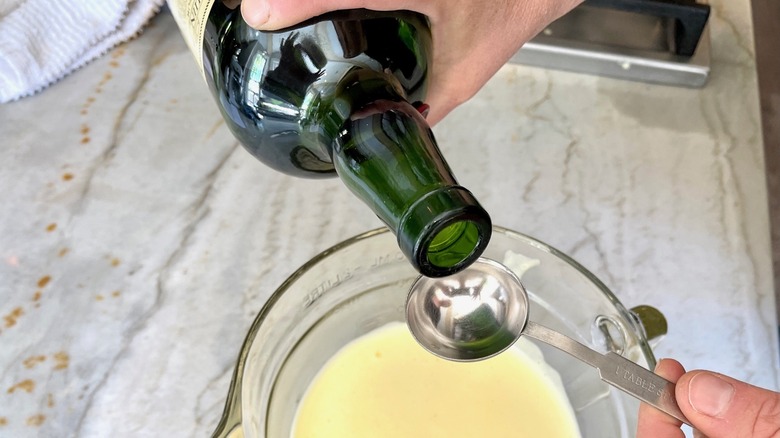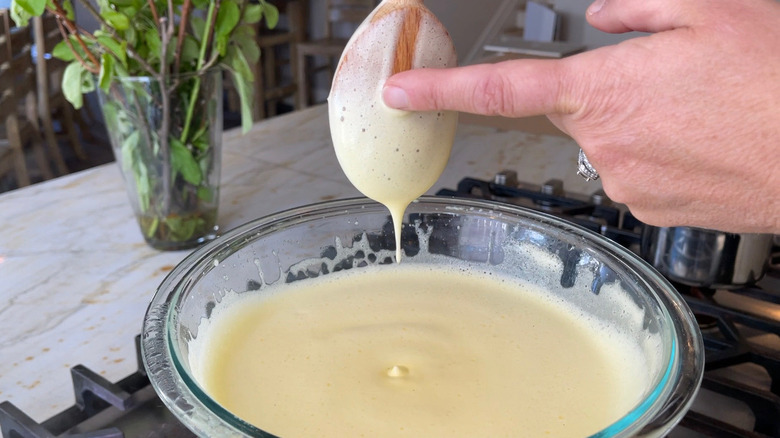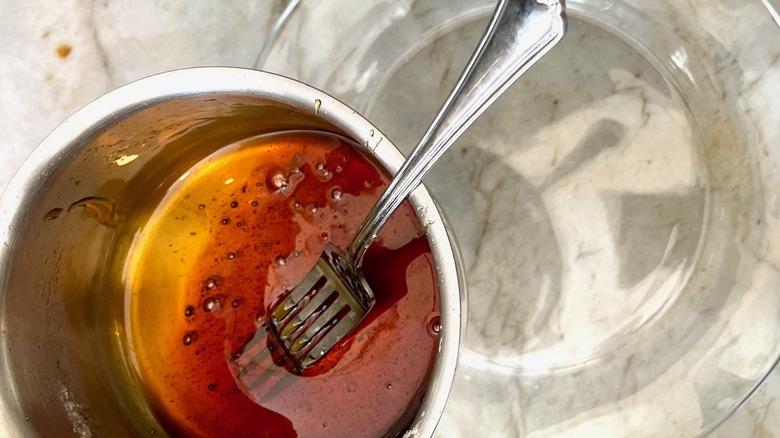Modern Floating Island Dessert Recipe
If you're looking for an exceptional dessert for a dinner party or special occasion, then look no further than this modern take on the classic (and classy) floating islands. These decadent meringue "islands" in a "sea" of custard topped off with a delicate caramel garnish are instant crowd pleasers. As recipe developer Tricia Wheeler says, "I like making this dessert because it is always delicious, the presentation is beautiful, and it is surprisingly light and airy!"
It's also surprisingly easy to make. With just 45 minutes of prep and 15 minutes of actual cooking time, you can have an Instagram-worthy ending to any meal. Best of all, you don't need any special equipment beyond what's already in your kitchen to make this sweet showstopper.
And what's Tricia's modern twist on this treat? A not-so-secret ingredient that will give your floating islands a little something extra without weighing down their light, airy elegance.
Gather your ingredients
To make modern floating islands, you'll need the following ingredients: eggs, sugar, vanilla, salt, water, and milk. While Tricia recommends using whole milk, she does have some suggestions for non-dairy alternatives. "You can also use coconut milk, almond milk, cashew milk, and even silken tofu," she said, though she pointed out that these substitutions might mean you'll need to tweak the proportions of the other ingredients.
In addition, you'll need liquor to transform this dish into something special. While Tricia likes Grand Marnier for this dish, she says Harlequin Orange Liqueur or cognac also work well.
Separate your eggs (but save the yolks for later)
To make your meringue "islands," start by carefully separating five eggs and placing the whites in a stand mixer metal bowl. It's crucial to take your time, so you don't mix any of the yolk in with the whites. "When you whip egg whites, you are making them into a foam," Tricia explains. "If the yolks get mixed with the whites, the fat in the yolks will prevent the whites from forming a foam." For now, set the yolks aside in a separate bowl and cover them with plastic wrap to prevent a skin from forming.
Whisk your egg whites
Using your mixer's whisk attachment, whisk the egg whites on medium-high for about 10 minutes while gradually adding sugar (three-quarters of a cup plus one tablespoon). The key here is to go nice and slow with the sugar, so you'll wind up with stiff peaks of meringue. And while you may want to use a little cream of tartar to get those peaks just right, Tricia advises against it since "You are hardly cooking the whites (just lightly poaching), and you should not need the extra stabilizer." Once you have nice, stiff peaks, mix on high for three minutes.
Cook the meringue into 'islands'
Pour about half a cup of milk and two tablespoons of liquor into a 12-inch-deep skillet (the milk should be about half an inch deep). Place your skillet over medium heat until bubbles just start to appear. Using two large teaspoons, create eight "islands" of meringue. Place the meringue in the milk (you may want to start with just three as pictured). Cook for one minute until the meringue feels slightly dry, then carefully turn the "islands" over and cook for about one and a half minutes longer. Remove each of your "islands" from the milk with a slotted spoon, and drain them on a plate. Repeat this step with the remaining meringue.
Time to make the custard
Hope you saved those yolks from step one because now you'll need them to make a sweet "sea" for your "islands." Add the rest of the milk to the pan, then add the vanilla and the remaining two tablespoons of liquor to the milk mixture. Put that aside for now and heat a few inches of water in a medium saucepan to act as a double boiler. Place another pan or heat-proof bowl on top of the simmering water and add the egg yolks and the remaining egg. Stir in half a cup of sugar as well as the remaining salt and milk.
Avoid turning your custard into scrambled eggs
Whisk the mixture constantly until it thickens, which should take about 15 minutes. It's important to pay close attention to the custard and whisk it the whole time it's cooking. "A new baker should make sure they are careful when making the custard in the double boiler," Tricia explains, adding, "whisk continuously to keep the mixture moving so you don't scramble the eggs."
When the custard coats the back of a spoon, remove it from the heat and pour it into another bowl. Continuing whisking the custard until it's no longer steaming. Place both the custard and the meringue in the refrigerator to cool until ready to serve.
Don't forget the garnish
No modern floating islands dessert is complete without its decorative spun sugar caramel garnish. To make this eye-catching touch, heat two-thirds of a cup of sugar and a third of a cup of water in a small saucepan. Note: You do not want to stir the mixture. Wait until it turns an amber color, then quickly take it off the heat.
Using a fork, drizzle your sugar concoction in a circular motion on a dinner plate to make the garnishes. The sugar will harden quickly, so set it aside on a piece of parchment until you're ready to add it to your floating islands. Just remember, the sugar will become sticky after a few hours. You'll want to make four garnishes (one for each serving).
When it's time to serve, spoon the custard into shallow dessert bowls, float two "islands" in each bowl, and top with the spun sugar caramel garnish.
Modern floating island dessert directions
If you're looking for an exceptional dessert for a dinner party or special occasion, then look no further than this modern take on floating islands.
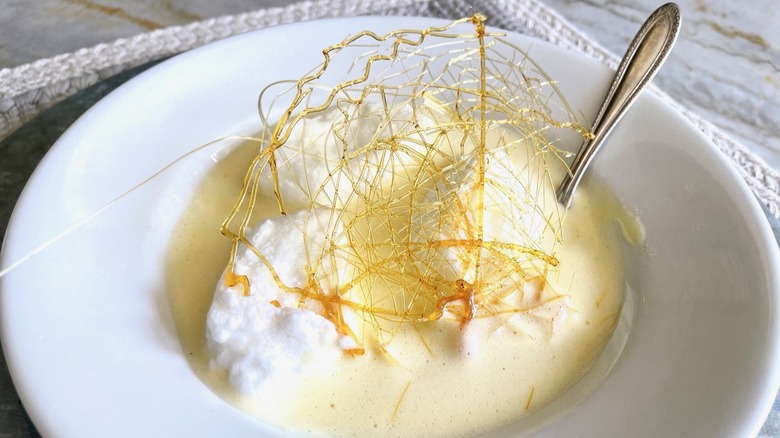
Ingredients
- 6 eggs
- 2 cups sugar, divided
- 2 ½ cups whole milk, divided
- 3 tablespoons liquor (Harlequin Orange Liqueur, cognac, or Grand Marnier work well), divided
- 2 teaspoons vanilla
- ½ teaspoon salt
- ⅓ cup water
Directions
- Carefully separate 5 eggs and place whites in the metal bowl of a stand mixer. Make sure no yolks get mixed with the whites. Reserve yolks and cover them with plastic wrap to prevent a skin from forming.
- Using mixer whisk attachment, whisk egg whites on medium-high about 10 minutes, adding ¾ cup plus 1 tablespoon sugar gradually to the whites until stiff peaks form. Mix on high for 3 minutes.
- Pour about 1/2 cup milk and 2 tablespoons of liquor into a 12-inch-deep skillet (milk should be about ½-inch deep). Place over medium heat until bubbles are just starting to appear. Using two large teaspoons, create 8 "islands" of meringue. Cook for 1 minute in milk until the meringue feels slightly dry. Carefully, turn the islands over and cook for about 1 ½ minute longer. Remove from milk with a slotted spoon and drain on a plate. Repeat with remaining meringue.
- Add the rest of the milk to the pan. Add vanilla and the remaining 2 tablespoons of liquor to the milk mixture. Keep aside.
- Heat a few inches of water in a medium saucepan to act as a double boiler. Place another pan or heat-proof bowl on top of simmering water and add the reserved egg yolks and remaining egg. Stir in 1/2 a cup of sugar as well as remaining salt and milk. Whisk mixture constantly until it thickens (about 15 minutes). Pay close attention to the custard, whisking the whole time it is cooking so you don't scramble the eggs. Custard is done when it coats the back of a spoon. Remove custard from the heat and pour into another bowl, and whisk until no steam is coming from the custard. Allow custards and "islands" to cool in the refrigerator until ready to serve.
- Make the spun sugar caramel topping by heating ⅔ cup sugar and ⅓ cup water in a small saucepan (do not stir) until it is an amber color. Quickly take it off the heat.
- Use a fork to drizzle sugar in a circular motion on a dinner plate to make garnishes. The sugar will harden quickly. Set aside on a piece of parchment until ready to use. Make four garnishes.
- To serve, spoon custard into a shallow dessert bowl and float two "islands" in each bowl. Top with spun sugar caramel garnish.
Nutrition
| Calories per Serving | 619 |
| Total Fat | 11.1 g |
| Saturated Fat | 4.9 g |
| Trans Fat | 0.0 g |
| Cholesterol | 255.2 mg |
| Total Carbohydrates | 112.2 g |
| Dietary Fiber | 0.0 g |
| Total Sugars | 112.2 g |
| Sodium | 450.9 mg |
| Protein | 12.9 g |
